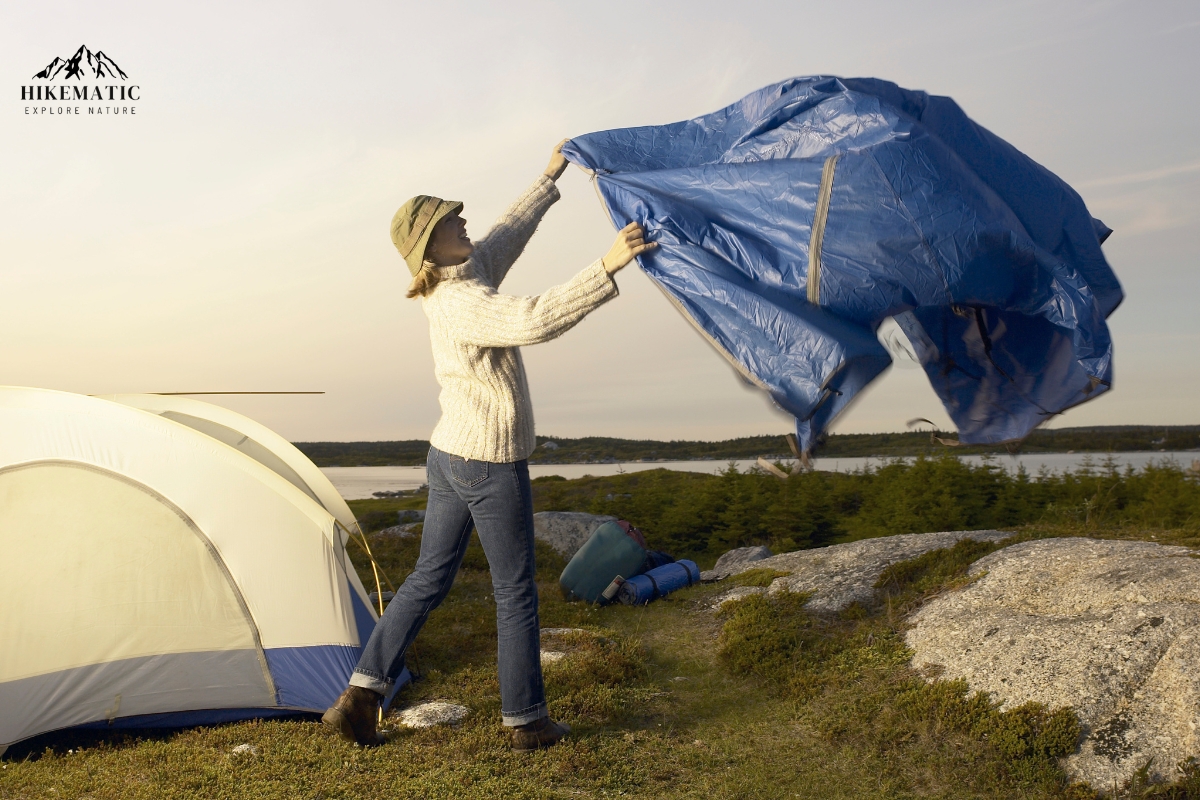Have you heard different opinions on tarps under tents? While some experienced campers recommend it, others do not believe it’s necessary. Is placing a tarp under a tent truly helpful, or just a myth? Let’s look into whether a tent footprint can change your camping experience. We’ll cover the benefits, like better tent protection, increased comfort, and moisture control. Let’s see if it’s really worth the extra work.
The Benefits of Using a Tarp Under Your Tent
Putting a tarp under your tent can make camping much better. It adds protection and comfort, fighting off surprises. Here are the key reasons why using a tarp is a smart move in camping.
Protecting Your Tent Floor
A tarp under your tent keeps the floor safe. The ground contains sharp objects such as rocks and twigs. A tough tarp guards against cuts and holes, making your tent last longer.
Preventing Water Seepage
A tarp stops water from getting inside your tent. Have you ever found your tent floor wet after sleeping? A tarp underneath keeps it dry, even when it rains hard. This keeps the tent’s interior comfortable.
Enhancing Comfort and Insulation
A tarp also means better insulation when camping. It keeps the heat in, which warms up the tent. This means you stay more comfortable, even on cold nights.
How to Properly Place a Tarp Under Your Tent
Putting a tarp under your tent can really improve your camping trip. It’s key to choose the right tarp size and place it correctly. This keeps the tent floor safe and boosts your comfort. Here’s the best way to do it:
Choosing the Right Size Tarp
Getting the right tarp size is important. You want it to match your tent’s bottom size. Too big, and water may pool. If your tent is too small, it may not provide adequate coverage. Measure your tent’s bottom. Then, choose a tarp that covers well without hanging over too much. This is a key first step for excellent tent protection.
Securing the Tarp Correctly
After picking the right tarp size, securing it well is your next key step. Lay the tarp flat on the ground where your tent will go. Make sure it’s smooth and tight. To keep it in place, use stakes or rocks. This makes sure the tarp stays put at night. It protects your tent from wind and rain, which are common in camping.
By picking and placing your tarp well, you prepare for a comfy and safe camp. Always check your setup to make sure it’s secure. This helps protect your tent and makes camping more fun.
Common mistakes to avoid
Putting a tarp under your tent can improve your camping experience. However, it’s critical to avoid common mistakes for a smooth trip.
Using the wrong size tarp
Using a tarp that doesn’t fit right is a big error. If the tarp is too large, it could trap rainwater, resulting in a damp tent. Too small, and your tent’s floor could touch the ground. Picking the correct size is vital to avoid these issues.
Incorrect Placement
Even the right tarp can fail if placed wrong. It should sit exactly under your tent. To prevent water pooling, make sure it doesn’t stick out. Correctly setting your tarp ensures a dry tent base.
Ignoring the Edges
Ignoring the tarp edges can result in water seeping into your tent. Ensure the tarp edges lie flat and hidden. This step is key to keeping your tent dry. Proper edge management prevents unexpected camping issues.
Factors to Consider When Adding A Tarp
Deciding on a tarp under your tent depends on several key factors. These factors affect your camping success. Think about the environment, weather, and the ground you’ll set up camp on.
Your Camping Environment
The camping environment is critical in deciding if you need a tarp. Different settings, such as forests, beaches, and mountains, have unique challenges. In a forest, a tarp protects against sharp objects. At the beach, it keeps sand out and adds comfort.
Weather Considerations
When choosing a tarp, the weather is a big deal. A tarp keeps you dry during rain by preventing water from entering your tent. In snow, it adds warmth by insulating the ground. In hot weather, it also protects you from ground heat.
Type Of Terrain
The camping terrain also has an impact on your decision. Rough, uneven ground can damage your tent’s floor. A tarp helps to create a smooth surface and prevent damage. On softer ground, it still protects your tent, reducing wear and tear.
Do You Need a Tarp Under Your Tent to Enhance Its Waterproofing?
To master the art of waterproofing your tent, consider using a tarp underneath. A tarp provides an additional layer of protection against moisture from the ground, enhancing your tent’s waterproof capabilities. This simple addition can keep your sleeping area dry, ensuring a more comfortable camping experience, even in wet conditions.
Conclusion
Let’s summarize our discussion about tent pitching. Putting a tarp under your tent is very important for camping. It protects your tent’s bottom and keeps water out. It also makes camping more comfortable and warmer.
Choosing the right tarp size and putting it correctly is key. If you don’t do it right, you might face problems. Make sure your tarp setup works well and avoids any issues.
We have discussed numerous camping tips here. Your camping spot, the weather, and the ground type matter a lot. These things affect how you use your tarp. Keeping these tips in mind will make your camping trips better. Next time, use what you’ve learned here for a wonderful adventure.

